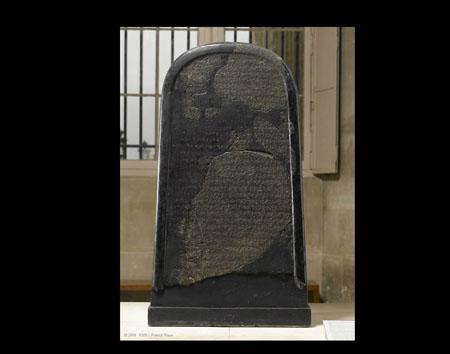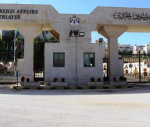You are here
Local centre requests return of Mesha Stele from Louvre
By JT - Jun 22,2014 - Last updated at Jun 22,2014
AMMAN — The Mesha Centre for Studies and Human Rights on Sunday delivered an official request to the French embassy in Amman for the return of the Mesha Stele artefact from the Louvre Museum to Jordan.
The request, sent by centre’s president, Daifallah Hdeithat, said the stele was moved from Theeban, the historical capital of the kingdom of Moab, in 1868 when Jordan was under Ottoman rule, the Jordan News Agency, Petra, reported.
The request referred to the good relations between the Kingdom and France based on mutual respect, noting that retrieving the stele is a Jordanian right whether under UNESCO or international agreements and conventions, according to Petra.
The stele of King Mesha “constitutes one of the most important direct accounts of the history of the world that is related in the Bible”, according to the Louvre.
“The inscription pays tribute to the sovereign, celebrating his great construction work and victories over the kingdom of Israel during the reign of Ahab, son of Omri,” the museum says on its website.
The mention of “Israel” is its earliest known written occurrence.
The arched shape of the stele and the basalt used are “characteristic of the votive steles erected in the Levant since the Bronze Age, from Ugarit on the Syrian coast to Hazor in Galilee”, according to the Louvre.
“The complete absence of figurative representation on this particular stele is exceptional, however, as is the predominant place given to the text,” the museum says.
Orientalist Ernest Renan said its 34 lines make it “the most important discovery ever made in the field of Oriental epigraphy”.
The inscription “cites the name of the great god of Moab, Chemosh, whose spiritual ‘son’ Mesha claims to be”.
King Mesha’s victories were mainly in the northern territories of Moab, with the tribe of Gad and Madaba.
The identification of present-day Theeban “as the biblical site of Dibon has been confirmed by the text of the stele and American excavations over the years that have shed new light on the capital of the kingdom of Moab”, according to the museum.
“This site has been occupied since the beginning of the 2nd millennium. The layers corresponding to the Moabite period (9th-6th centuries) are well represented by an official building (perhaps a palace) and a temple, where a terracotta base of an altar was found.”
Related Articles
AMMAN — French Ambassador to Jordan Caroline Dumas on Tuesday stressed the French government’s understanding of the historic importance of t
The French embassy in Amman has informed the Mesha Centre for Studies and Human Rights that it has sent the Louvre Museum the request to retrieve the Mesha Stele artefact, Mesha Centre President Daifallah Hdeithat said Tuesday.
The Mesha Centre for Studies and Human Rights on Tuesday held its first meeting as part of a national campaign to retrieve the Mesha Stele from the Louvre Museum and return it to Theeban.














